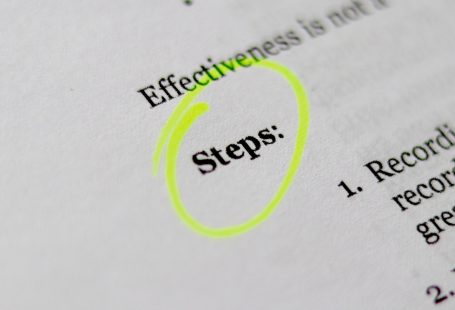When it comes to crafting the perfect curriculum vitae (CV), preparation is key. Taking the time to organize your thoughts and materials will lead to a clearer, more polished document that effectively showcases your skills and experience. In this article, we will explore practical steps you can take before diving into the actual writing process.
Gathering essential information
The first step in preparing to write a CV is assembling all the necessary details. This means collecting accurate and up-to-date information about your work history, education, skills, and other pertinent aspects. Having this data readily available will streamline the writing process and help ensure nothing important is overlooked.
To get started, visit cv-creator.co.uk for additional guidance on what to include in your resume. It’s crucial to be thorough during this phase so that you have a solid foundation to build upon later.
Professional summary
Your professional summary is often the first thing employers see. It should offer a succinct yet compelling overview of your career achievements and aspirations. Spend some time reflecting on how best to present yourself in these few sentences.
Consider focusing on your most significant accomplishments and areas of expertise. Think of it as a quick snapshot that makes hiring managers eager to learn more about you.

Contact information
Ensure that your contact information is current and professional. Use a simple email address that includes your name; avoid nicknames or unprofessional handles. Double-check phone numbers and mailing addresses for accuracy.
Consider adding links to your LinkedIn profile or personal website if they are relevant and support your job application.
Reflecting on your career journey
Before starting your CV, it’s beneficial to reflect on your career journey. Take some time to think through your past roles, responsibilities, and achievements. This reflection helps identify key experiences to highlight in your document.
As you do this, jot down answers to several questions to reflect on such as: What were your major accomplishments? Which skills did you develop? How did your previous roles shape your professional abilities?
Work experience
Your work experience section should showcase your employment history and demonstrate your growth and development over time. List your positions in reverse chronological order, starting with the most recent. Each entry should include job title, employer’s name, location, and dates of employment.
Provide concise descriptions of your duties and achievements under each role. Use bullet points for clarity and focus on quantifiable results where possible—this adds credibility to your claims.
Education and qualifications
Next, outline your educational background and any relevant qualifications. Include the institutions attended, degrees earned, and graduation dates. Also, mention any certifications or training programs that bear significance to the job you are pursuing.
If you have achieved honors or special recognitions, make sure to note these as well. Highlighting your academic and professional credentials underlines your commitment to continual learning and excellence in your field.
Introduction to your skills
A well-rounded CV will illustrate not only your experiences but also the skills you’ve developed along the way. Consider dividing your skills into categories like technical, soft, or language skills. This organizational structure enhances readability.
Throughout your CV, aim to provide evidence that supports your listed skills. For example, if you mention project management, briefly describe a successful project you led.
Job application customization
It’s vital to customize your CV for each job application. Tailoring your resume ensures that it aligns closely with the job description and highlights the most relevant information. This increases the chances of catching the employer’s eye and landing an interview.
Read the job posting carefully and adjust your CV format and style accordingly. Emphasize the skills and experiences that match the employer’s needs. Personalizing your CV shows your genuine interest in the position and demonstrates that you have taken the time to understand their requirements.

Creating a visually appealing format
Presentation matters greatly when it comes to CVs. A clean, organized layout makes it easy for recruiters to find and digest information quickly. Your goal should be to create a visually appealing format that enhances readability without overwhelming the reader.
- Use clear headings: Separate sections like “work experience,” “education,” and “skills” with distinct headings.
- Opt for a readable font: Stick to fonts like Arial, Calibri, or Times New Roman. Keep the size between 10 and 12 points.
- Consistent formatting: Ensure consistent use of bold, italics, bullets, and spacing throughout your CV.
- Leave white space: Avoid clutter by leaving ample margins and spaces between sections. This helps guide the reader’s eye naturally through the document.
- Proofread: Check for typos, grammatical errors, and alignment issues. A polished CV reflects your attention to detail.
Including relevant information
While it’s tempting to include every job, task, or accomplishment, a focused approach works better. Only incorporate details that are genuinely relevant to the position you seek. Quality over quantity keeps your CV tight and impactful.
If you have gaps in your employment history or transitions between industries, provide brief explanations. These clarifications can mitigate any concerns potential employers might have about your career progression.
Optimizing for applicant tracking systems (ATS)
Many companies use ATS software to screen CVs before they reach human eyes. To increase the likelihood of your resume passing this initial filter, use keywords from the job description. These could be specific skills, job titles, or industry-related terminology.
Avoid complex layouts or tables which might confuse the software. Stick to a straightforward structure with clearly defined sections. This strategy ensures that your CV is both human and machine-friendly.
November 5, 2024





